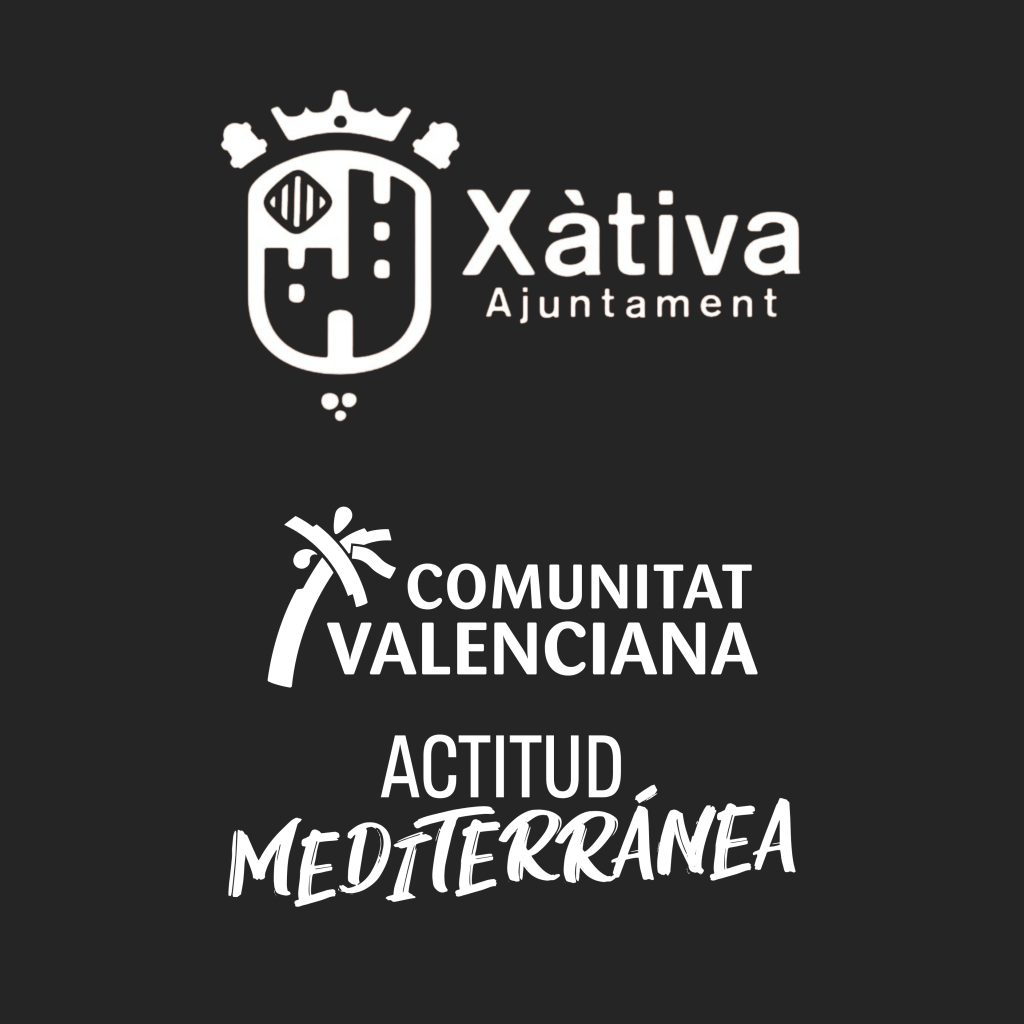Holy Week in Xàtiva
Passion and tradition
Holy Week in Xàtiva
Passion and tradition
Stretching back for centuries
The Holy Week celebrations in Xàtiva are among the most long-standing and lavish of their kind in the Region of Valencia. The city boasts a total of sixteen confraternities (associations that organise the processions), clear evidence of the popular appeal of these festivities in which throngs of people from the city and its surroundings participate. This immensely valuable religious celebration in terms of culture and heritage was recently declared a Festival of Interest to Provincial Tourism.
Its origins undoubtedly date back at the late Middle Ages, although all documents prior to 1707 held in the municipal archives were lost when the city was burnt. Immediately afterwards, in the 18th century, Holy Week reached its peak of splendour. According to documents of the time, it was among the most outstanding celebrations in all the Mediterranean.
A wealth of artistic and religious heritage
During Holy Week, the city streets throng with spectators come to observe the strikingly solemn processions rich in historical, artistic and religious heritage. The Cofradía de la Sangre confraternity has the longest-standing history in Xàtiva’s Holy Week celebrations, tracing its origins back to the 14th century, and is also one of the oldest in Spain.
One of the most renowned processions is les Cortesies, or The Encounter, which is held on Easter Wednesday and features the figures of Christ (Ecce Homo) and the Virgin (Nuestra Señora de la Soledad). The image of the Virgin Mary is brought forth from the collegiate church and that of Christ from the church of Nuestra Señora de la Merced. The two processions come together at midnight before the church of Sant Francesc. Another highlight is the public Stations of the Cross organised by the city’s confraternities.
Sculptural treasures
Known as the pasos, the figures paraded by the different confraternities form a sumptuous artistic element in Xàtiva’s Holy Week celebrations. Many of the figures are of great antiquity and value, created by the best specialists of the time.
Josep Esteve i Bonet
Some of the figures have been attributed to the Valencian artist Josep Esteve i Bonet, a leading neo-Classical sculptor who specialised in religious imagery. Unfortunately, documentary research on this festival has been severely hampered the loss of the municipal archives in the fire, the dispersion of convent documents after the confiscation of church property and the destruction of religious heritage in 1936.
Music to stir emotions
Music forms an intrinsic feature of the religious processions held in this the climax of the Christian liturgical year. In addition to each confraternity’s drum band, whose measured beats stamp the occasion with a sense of solemnity, two musical societies Xàtiva also participate. Called the Primitiva Setabense and the Nova de Xàtiva, these have jointly produced two works of eminent artistic value entitled Marxes processonals, with a compilation of the pieces that ring through the city’s streets during Holy Week. These include the Marcha Fúnebre nº3 by Attilio Bruschetti, an Italian musician who lived in Xàtiva at the beginning of the 20th century. In the 1930s, Carlos Sarthou would recall the piece in his work Datos para la historia de Játiva (Notes on the history of Xàtiva):
“Musical laments; mournful, heartrending notes of a poignant funeral march […] in the melancholy solitude of the sublime night of Easter Friday.”
MORE INFORMATION
The date of Holy Week changes every year, as Easter Sunday falls on the first Sunday after the first full moon in spring. The best way to find out about the full range of events is to visit the website of the association of confraternities.
The association has also produced an APP with the full Holy Week programme, event notifications, multimedia material, streamed broadcasts, etc.



